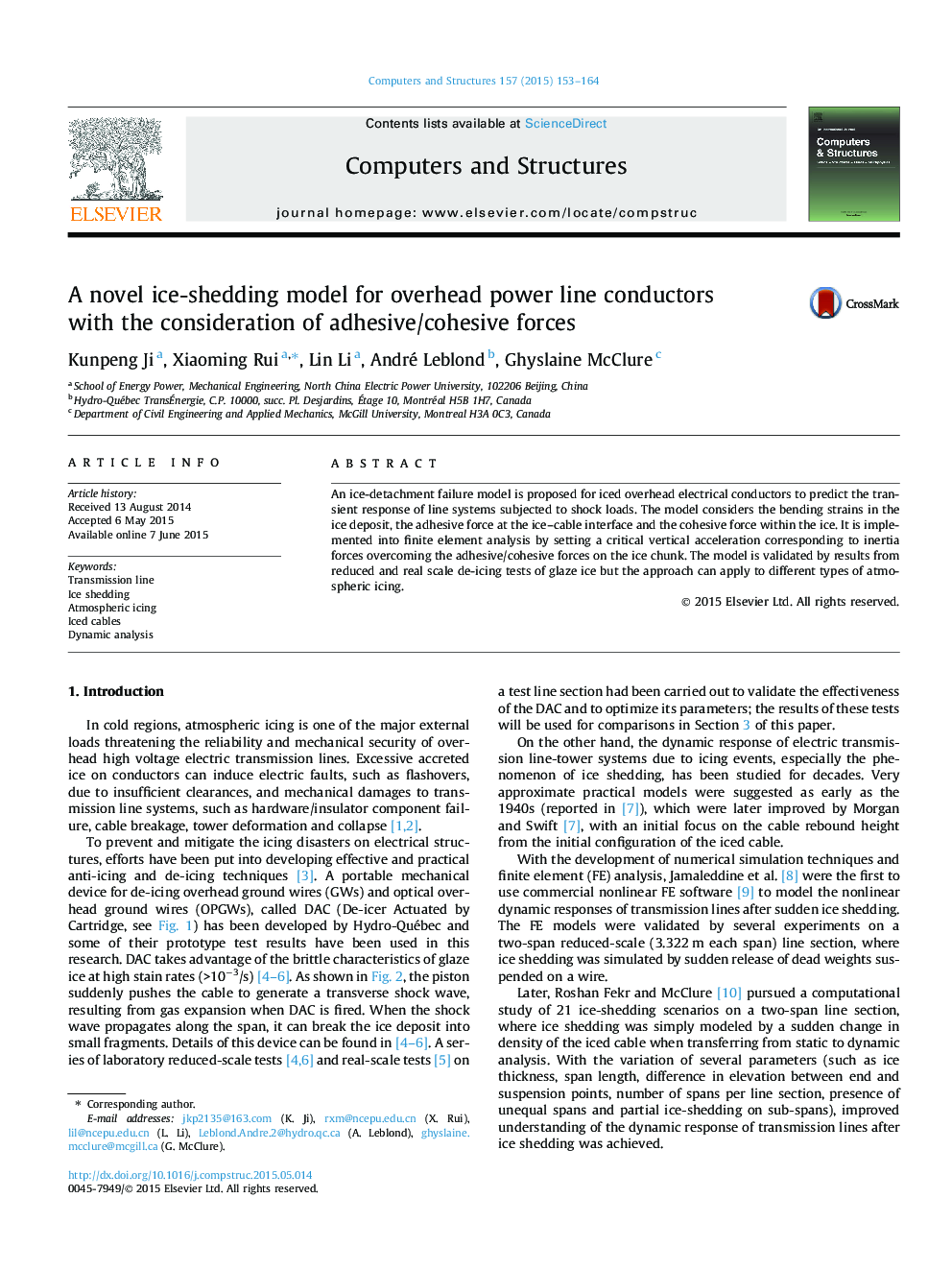| Article ID | Journal | Published Year | Pages | File Type |
|---|---|---|---|---|
| 509666 | Computers & Structures | 2015 | 12 Pages |
•An ice-detachment failure model is proposed to predict the transient response of iced line systems subjected to shock loads.•The model considers the bending strains in the ice, the adhesive and cohesive forces.•The model is implemented into finite element analysis by setting a critical vertical acceleration.•The model is validated by both reduced and real scale mechanical de-icing tests.
An ice-detachment failure model is proposed for iced overhead electrical conductors to predict the transient response of line systems subjected to shock loads. The model considers the bending strains in the ice deposit, the adhesive force at the ice–cable interface and the cohesive force within the ice. It is implemented into finite element analysis by setting a critical vertical acceleration corresponding to inertia forces overcoming the adhesive/cohesive forces on the ice chunk. The model is validated by results from reduced and real scale de-icing tests of glaze ice but the approach can apply to different types of atmospheric icing.
